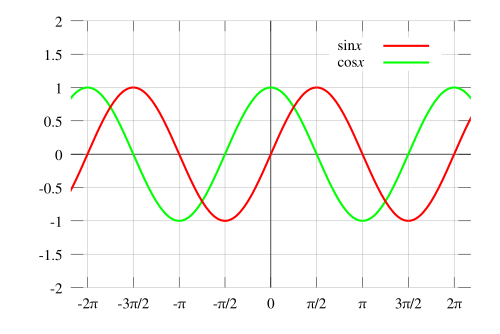Sine and cosine do not have asymptotes because they are a wave when they are shown fully and they run forever on the x-axis. Also, cosine, in unit circle terms, is x/r and since r is always 1, cosine can never be undefined since r can never be zero, which is what makes a function undefined: when the denominator is zero. The same goes for sine. In unit circle terms, sine is y/r and since r is always 1, sine can never be undefined since r can never be zero, which is what is needed if you want to result in an asymptote: the denominator would have to be zero.

Secant, cosecant, tangent, and cotangent all have asymptotes of how x and y are zero in this case. Secant is 1/cos which is r/x. X can be any number and when it is zero, secant automatically becomes undefined and and asymptote is produced. The same goes for cosecant, which is r/y, except that when y is 0, cosecant becomes undefined and has an asymptote.
Tangent is sin/cos so when cosine is 0, it becomes undefined and produces an asymptote. Same goes for cotangent except that since cotangent is cos/sin, when sine is 0, cotangent becomes undefined and results in an asymptote. Overall, the theme is common: depending on the ratios from the functions, certain functions can never have asymptotes and others can.

Sources: http://en.wikibooks.org/wiki/Trigonometry/Graphs_of_Sine_and_Cosine_Functions
http://en.wikipedia.org/wiki/File:Trigonometric_functions.svg

 repeats every
repeats every

 repeats every
repeats every










